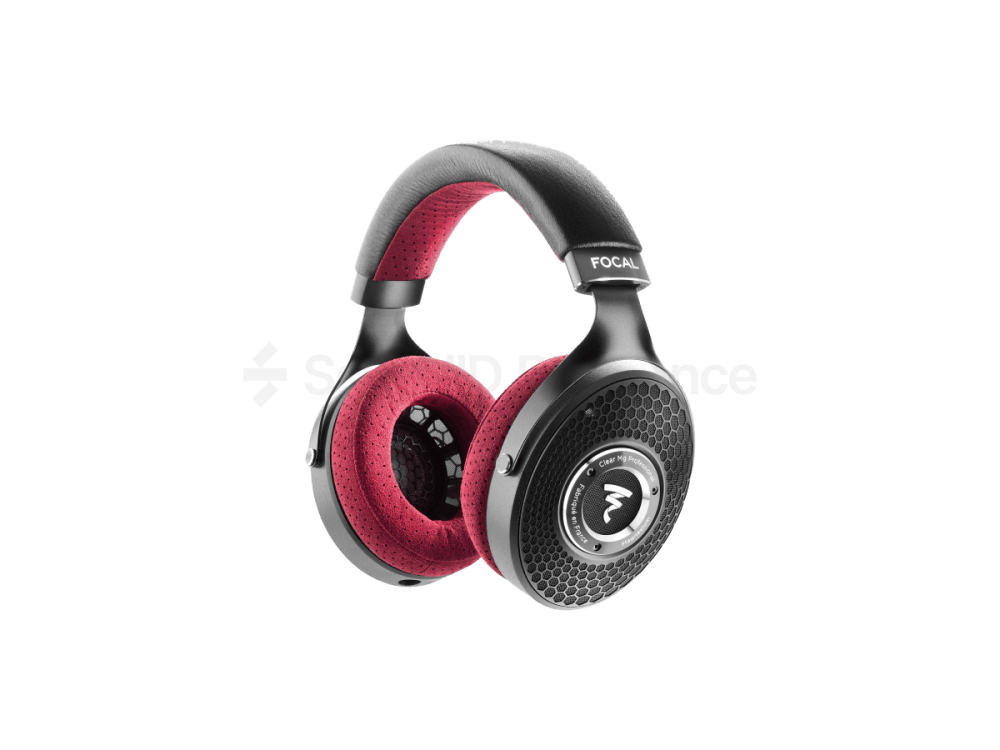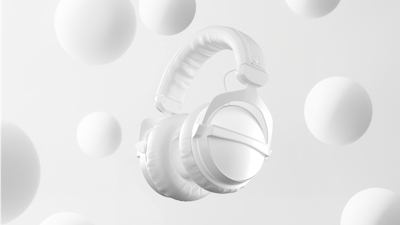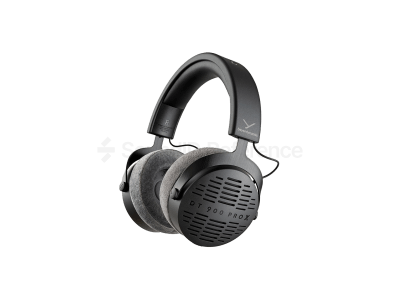As mentioned in our Focal Elear review, the French audio company has been innovating in headphone driver tech for some while now. Like its older brother, Clear uses a 40mm aluminium-magnesium m-shaped dome driver. The catch is that it’s sometimes 2 times the price of Elear, so let’s see what it brings to the table.
P.S. Focal Clear both in its hi-fi oriented version and as Clear Professional sounds the same. Only cosmetics and bundled accessories differ. Therefore this review should work for Clear Professional as well. We’ve measured both and indeed they both showed the same numbers.
- Superb distortion performance
- Can be worn for hours on end
- Superb looks and build quality
Pros list with SoundID Reference calibration
- Bass extension covers the audible range
- Highs and upper mids become neutral
- Poor value for money
- Colored highs and upper mids
Focal Clear has the same high sensitivity as Elear, yet the voice-coil has been changed from 80 to 55 Ohms. This means that from the same source set at the same volume Clear will go louder. Generally, this headphone doesn’t need a dedicated headphone amp to go loud enough, most interfaces will drive it with ease. An amp will come in handy to get the best out of these high-end headphones and so will a high a quality DAC. Most interfaces nowadays have very high quality DAC circuitry, but Focal Clear will let you know if you hook it up to something special like the RME ADI-2 Pro. Will that change the way you make music? Hard to tell. But it sure feels nice!
As has been the case with all Focal headphones I’ve handled lately, the build quality is positively stellar. Focal Clear is made mostly out of metal with padded surfaces upholstered with perforated microfiber. The regular Clear comes with three cloth-covered cables which feel nicer than the thick garden hose-like cable that was included with Elear. On the headphone side all cables are terminated with 3.5 mm TS jacks, so repairing cables shouldn’t be too hard. Ear pads are also easily replaceable.
The good news is that for most of the spectrum Clear manages to stay within +/3 dB of a flat response. The bad news… they’re less accurate sounding than Focal Elear or the crowd favorite Sennheiser HD 650. The general tonality is a bit dark with mids taking front stage. 1.4kHz have a curious peak that’s absent from Elear. This will make working with most instruments and voices harder. Like many other headphones, the region around 3kHz is scooped which makes the listening experience smoother. For critical work, the upper mid scoop is a detriment as it robs guitars and electronic instruments from their bite. Many engineers might add too much distortion when using the Clear. Highs are peaky, but amplitude wise these peaks aren’t too horrid. Overtone sounds will be changed. Generally, the Clear seems like a nice headphone for recreational listening, but too colored for critical sound work.
Generally good with some problems in the very low end. The top octave also shows some discrepancies, however, they’re too small to significantly shift the stereo image. Focal has done a decent job here.
Very nice! Comfort matches the luxurious looks of the Clear. The clamp isn’t too hard as the headphone relies on the headband to sit on one’s head. Even after listening to them for 5 hours non-stop no hot spots became apparent. The microfiber makes Clear’s ear pads even comfier than those found on the Utopia because microfiber is more breathable and doesn’t get sweaty after some time. Overall comfort is very good but falls short of the class leader Sennheiser HD 800 S mostly due to the significant weight.
This is where Clear clearly falls short. Its arch-nemesis is Elear, a headphone with a very similar driver, better measured performance and 1/3 less price. It seems like some of Elear’s owners are flocking to the seemingly improved Clear therefore I’ve seen good condition 2nd hand Elears being available for less than 500$. When comparing regular Clear with the Professional version the main difference is cosmetics and included accessories. Clear comes with an extra balanced 4-pin XLR cable, whilst the Clear Pro is bundled with an extra set of ear pads, which will be much more useful for most people. In conclusion, it’s a decent headphone, but if you enjoy its sound, better look for the more reasonably priced Elear.
There is none to speak of. Even at high SPL’s distortion will remain inaudible. Superb job with the new drivers, Focal!
Consistency between listeners is only fair. Like with the Elear most of the tonal shift occurs at upper mids.
How much do they differ pair to pair in terms of frequency response?Consistency is very good. Same as we’ve observed with other current Focal headphones and in line with other offerings in this price range.
Rating
Conclusion
On its own, the Clear and Clear Professional are very decent headphones. They might not have the stellar imaging of the Sennheiser HD 800 S, but they make up for that with better resolution and a more solid low end. The problem with Clear is Elear, a headphone half the price and 2 times the performance. If Clear was supposed to be an improvement on the Elear, then Focal needs to go back to the drawing board. Currently, it’s more of just a different flavor.
Final Rating
Calibration Enabled
Calibration








